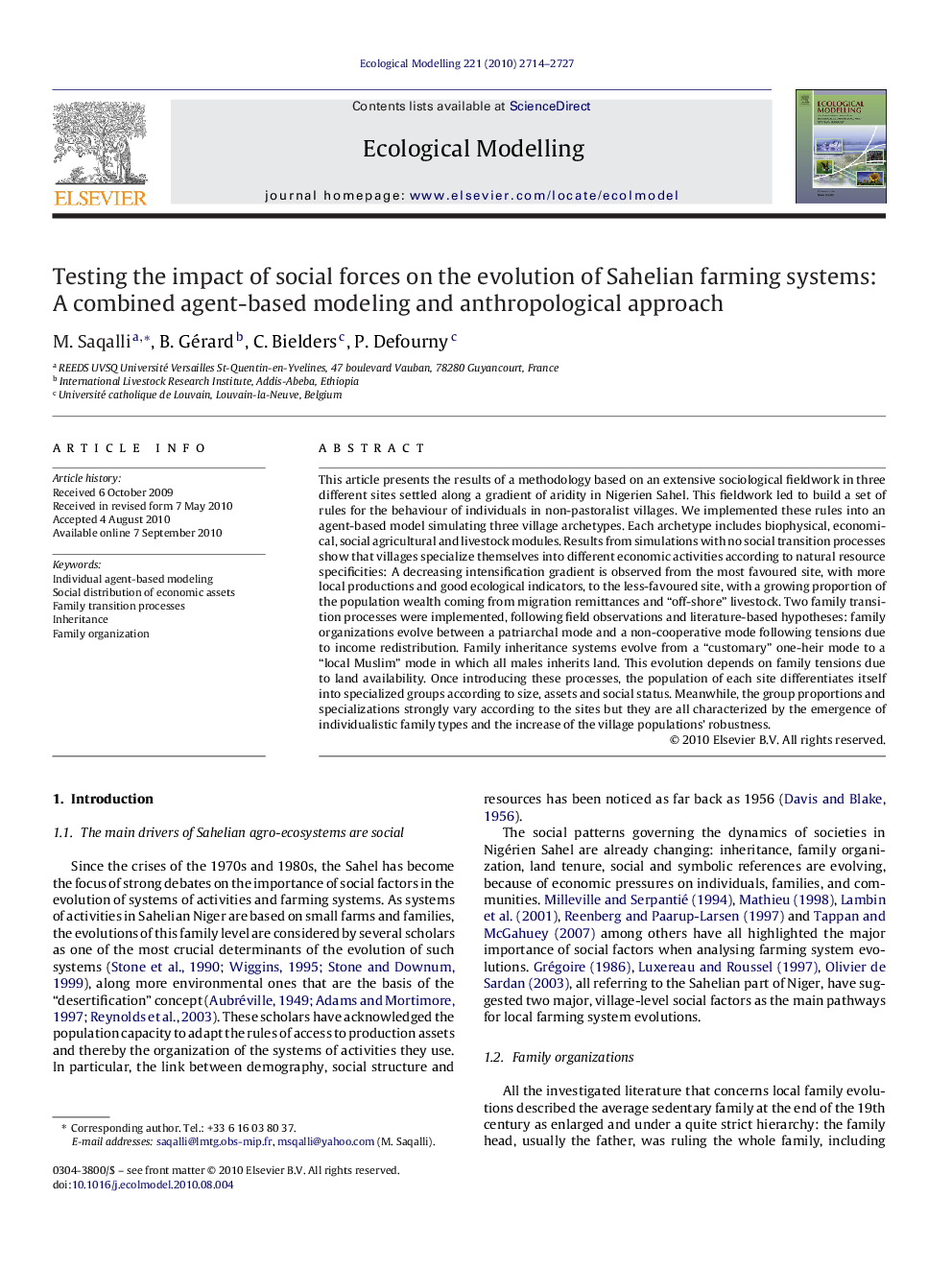| کد مقاله | کد نشریه | سال انتشار | مقاله انگلیسی | نسخه تمام متن |
|---|---|---|---|---|
| 4377279 | 1303418 | 2010 | 14 صفحه PDF | دانلود رایگان |

This article presents the results of a methodology based on an extensive sociological fieldwork in three different sites settled along a gradient of aridity in Nigerien Sahel. This fieldwork led to build a set of rules for the behaviour of individuals in non-pastoralist villages. We implemented these rules into an agent-based model simulating three village archetypes. Each archetype includes biophysical, economical, social agricultural and livestock modules. Results from simulations with no social transition processes show that villages specialize themselves into different economic activities according to natural resource specificities: A decreasing intensification gradient is observed from the most favoured site, with more local productions and good ecological indicators, to the less-favoured site, with a growing proportion of the population wealth coming from migration remittances and “off-shore” livestock. Two family transition processes were implemented, following field observations and literature-based hypotheses: family organizations evolve between a patriarchal mode and a non-cooperative mode following tensions due to income redistribution. Family inheritance systems evolve from a “customary” one-heir mode to a “local Muslim” mode in which all males inherits land. This evolution depends on family tensions due to land availability. Once introducing these processes, the population of each site differentiates itself into specialized groups according to size, assets and social status. Meanwhile, the group proportions and specializations strongly vary according to the sites but they are all characterized by the emergence of individualistic family types and the increase of the village populations’ robustness.
Journal: Ecological Modelling - Volume 221, Issue 22, 10 November 2010, Pages 2714–2727